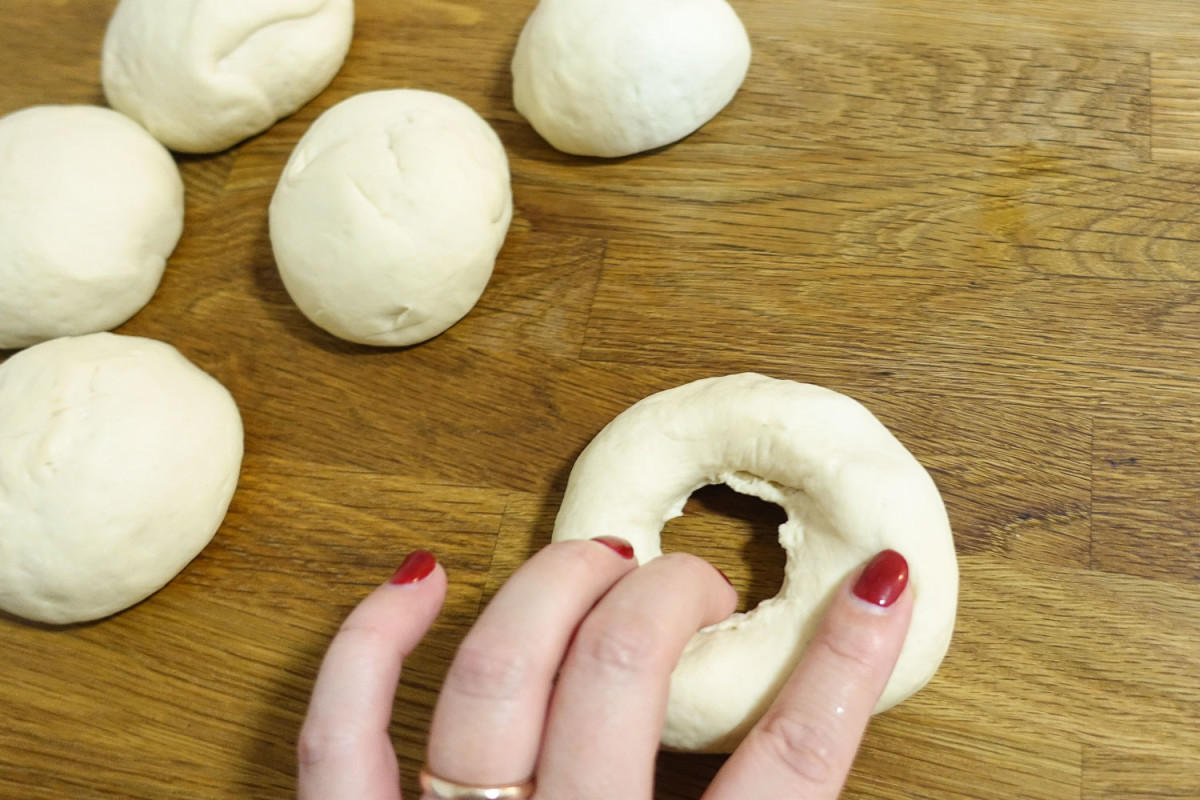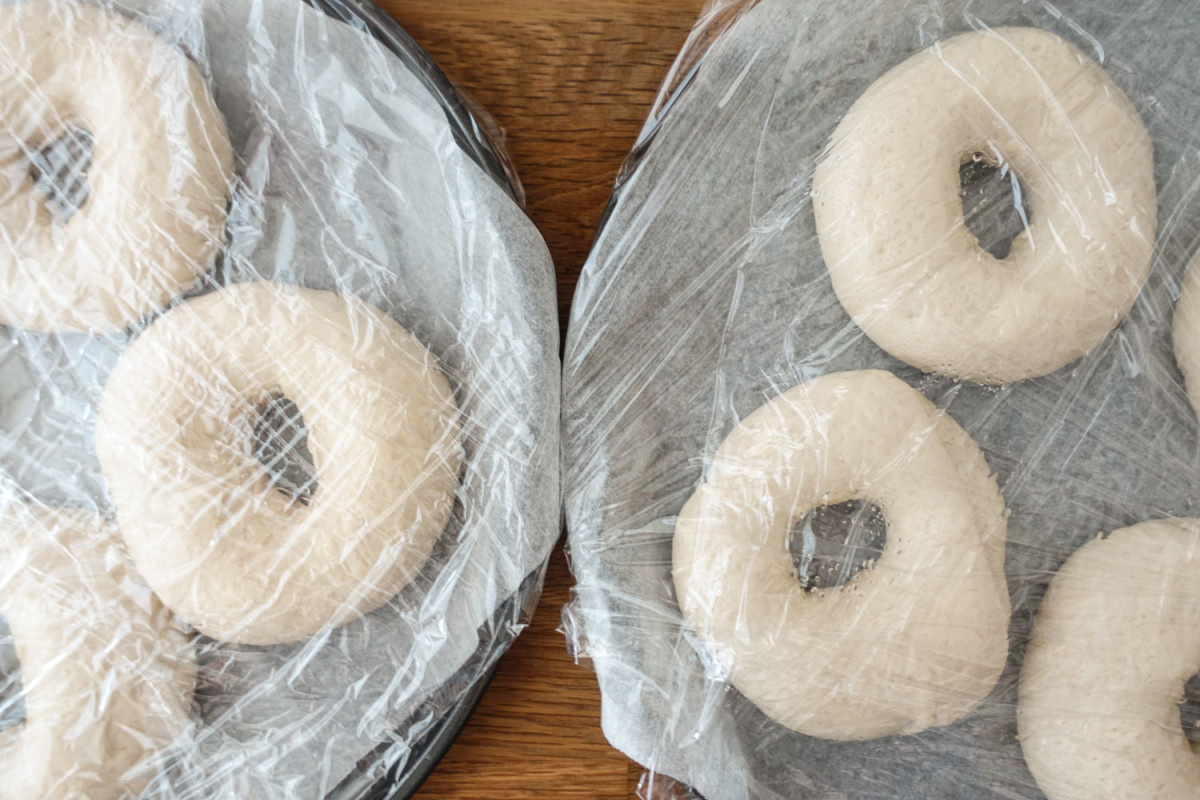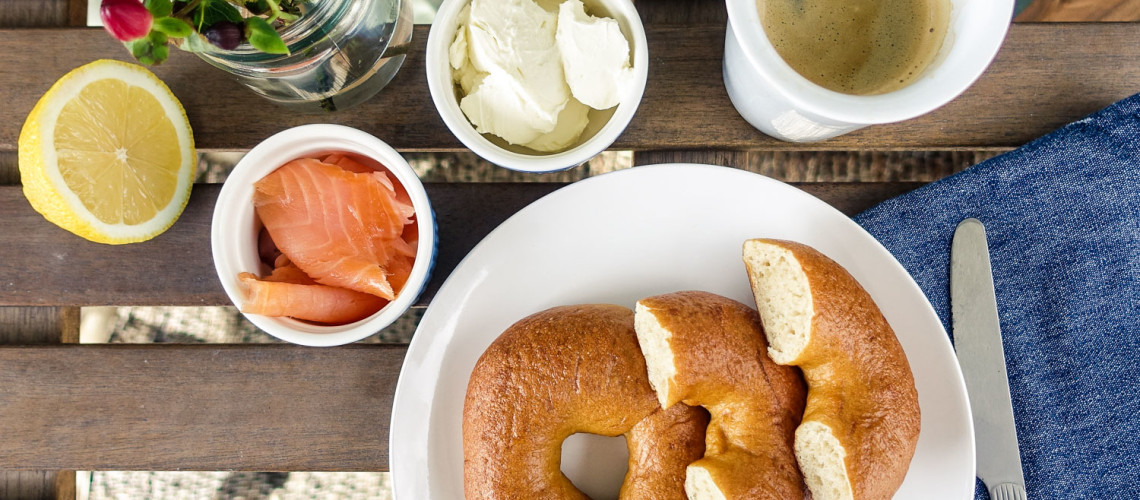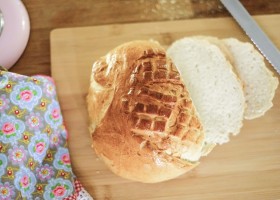Servings
8Cook
36 minIngredients
- 1 tablespoon honey
- 1 teaspoon instant yeast
- 1 1/2 teaspoons salt (or 2 1/2 teaspoons of coarse salt)
- 1 cup plus 2 tablespoons lukewarm water
- 3 1/2 cups bread flour
- 250 grams water, for poaching
- 1 1/2 tablespoons honey, for poaching liquid
- 1 tablespoon baking soda
- 1 1/2 teaspoons coarse kosher or sea salt
Tried and true
We absolutely love bagels in our house and eat them for breakfast or lunch most weekends. When I first came across this recipe I thought it looked a little complex and the fact you need to make the dough the day before was slightly off-putting, but I can assure you these are definitely worth the effort. They are actually super easy and hands down a million times better than any bagels you’ll find in the shops. Enjoy!
Method
Step 1
To make the dough, take the lukewarm water and add the honey, salt, and yeast, stirring briskly with a fork until dissolved, and add this liquid to the flour. If you’re using a mixer, use the dough hook and mix on the lowest setting for 3 minutes. If you’re mixing by hand, using a wooden spoon to mix the dough for about 3 minutes until the ingredients are well combined. Once the dough has formed a coarse ball and the all the flour has been mopped up, let the dough rest for five minutes.


Step 2
Once the dough has rested, it’s time to knead the dough in preparation for it’s overnight stint in the fridge. If you’re using a mixer, knead the dough on the lowest setting for 3 minutes. If you’re kneading by hand, lightly dust a large work surface with flour and knead for 3 minutes. The dough should be smooth and slightly tacky but not too sticky, and a little stiff yet supple.

Step 3
Place the dough in a lightly oiled bowl and cover with plastic wrap, and leave to rise at room temperature for 1 hour. The dough should increase in size by about half. In preparation for shaping the bagels, get a couple of baking trays ready by lining with baking paper and lightly coating the paper with oil.
Step 4
To shape the bagels, take the dough and divide into 8 equal portions. Form each piece into a loose ball by rolling it on a clean, dry work surface with a cupped hand. If the balls don’t form easily, wipe the work surface with a damp cloth and try again (the dampness adds a little traction). Poke your finger into the middle of each ball to form a hole, and gently shape and stretch the dough out until the hole is about 2 inches wide.



Step 5
Lay the bagels on the lined and oiled trays, and brush with a light coating of oil. Cover the trays with plastic wrap and leave in the fridge overnight.

Step 6
Before baking, the bagels must be poached briefly to help form a slight crust and develop their delicious chewy centre. Take the bagels out of the fridge about an hour before you plan to bake them, and preheat the oven to 260°C about half an hour before baking. To make the poaching liquid, add the water to a pot and bring to the boil. Reduce the heat to a steady simmer and add the honey, salt, and baking soda and stir until dissolved. Gently drop in a bagel – it should float to the top – and leave it to poach for 1 minute. Flip the bagel and poach for a further minute, them remove it from the water back onto the parchment (I like to re-oil it for an extra crispy bottom) dome side up. Repeat for the rest of the bagels. If you’d like to add seeds, sprinkle these on as soon as the bagel goes back onto the tray from poaching.



Step 7
Put the bagels in the oven and reduce the heat to 230°C. Cook for 8 minutes and check that the bottoms are not over-browning. If they’re getting too dark, place another pan under the baking sheet (doubling the pan will insulate the first baking sheet). Bake for another 8 to 12 minutes, until the bagels are a golden brown.
Cool the bagels on a wire rack for at least 30 minutes before slicing.

Notes
- These bagels freeze really well and are delicious heated up in the oven at 180°C fan (200°C non-fan) for about 10 minutes.
- You can add toppings to your bagels if you fancy it – sesame seeds, poppy seeds, and coarse seat salt work well (just don’t go overboard with the salt!).
- It’s best to use thick, malty honey to give an extra punch of flavour – I use pohutukawa tree honey from New Zealand.
Recipe adapted from Peter Reinhart’s bagel recipe on www.epicurious.com


 Pavlova
Pavlova Double chocolate berry brownie
Double chocolate berry brownie
